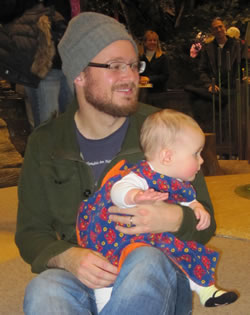|
A number of years ago when I was working on a novel to finish the MFA I was taking up in Central New York, my advisor was a certain platinum-haired writer whose short stories I'd always loved. The year before, she had been nominated for the National Book Award for her most recent novel. I'd been slow to coming around to the idea of spending three years only writing, but now here I was—meeting monthly with one of my favorite writers, my only responsibility finishing a novel. She was funny and genius and genuine and suffice it to say that whatever she suggested, that I did.
Immediately.
We met in her office or at a well-appointed hotel restaurant, and once she came in after reading a hundred pages of the book I was working on and said, "This is good. I mean, it's fine. The language is nice. But to be honest, I think you just need to sit more. Sit and think deeply about these characters more." And I thought… how exactly does one do that? I took anything this writer suggested to heart, but for the first time in the three years I'd known her, I was stumped. I'm too much a neurotic for such stuff. Where would one sit, exactly, to do this thinking? And how? Relaxed? Stiffly? More important: What was I to do with my hands?
I finished the manuscript without ever having sat or thought deeply, took the degree and lucked into a teaching job. I moved to Philadelphia. My wife and I bought a house. We had a kid. We named her Abigail, which in Hebrew means "a father's joy." She was born the last week in March, and so after my wife took maternity leave, I spent the summer at home with the baby. As with all babies, it took some doing to get her to sleep for each nap, but once she was down she was a great napper. Two, three, sometimes even four two-to-three-hour naps a day: lots of writing time. Pre-parenthood, I'd been very, very rigid about my writing schedule: three hours a day, every day. Never less, never more. But now that changed. I had to write when the baby was asleep. Instead of opening a Word file at 9am (not 9:01! 9!) and then closing it at noon, I'd just leave my computer open all day. Writing happened when baby slept.
This transition was smoother than I expected. Maybe I was blessed with an easy kid, or maybe I'd been waiting for something I didn't know I needed. I read Healthy Sleep Habits, Happy Child and Happiest Baby on the Block more times than I'd read The Writing Life or Aspects of the Novel, and with a greater sense of urgency. Early on I would hush diligently in Abby's ear like I imagined the womb must sound, rock her from above one of my ears to above the other. But soon it got easier. I relaxed. I began to trust myself. One mid-June day, I found I was just swaying back and forth with her in my arms, her sweet face against mine, for a half hour (forty-five minutes? an hour? I don't know—I was thinking deeply), and she'd gone to sleep. Here I was, in Abby's nursery after a morning grinding out a story. Instead of worrying, I was walking her and bouncing her for the time it took to get her down for a nap, and something new happened:
I was working the piece over in my subconscious. I wasn't sitting quietly, thinking, exactly. I was more like standing. Swaying, quietly. Thinking, but not thinking. At some point I looked down and in my arms, under that white, blue and pink blanket they send you home with from the hospital, I saw the lilac lightning of veins struck through Abby's closed eyelids.
She was asleep.
Later that same mid-June afternoon, when I got down to writing, it was like I was translating the thoughts from that time with Abby in my arms. Now, as one of my favorite of Raymond Carver's characters says, I was cooking with gas. And the answer to my silliest but truest question, the question that one of my favorite writers then and favorite writers still had made me ask when I was trying to write a novel, was: Hold a baby. That's what you do with your hands when you're thinking deeply about your characters.
|


